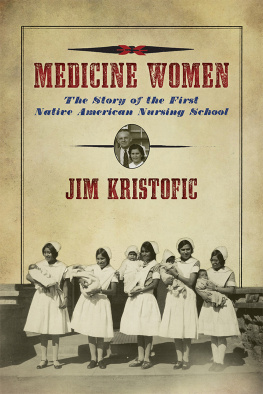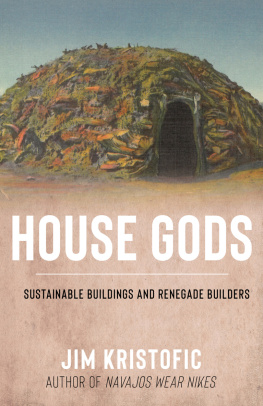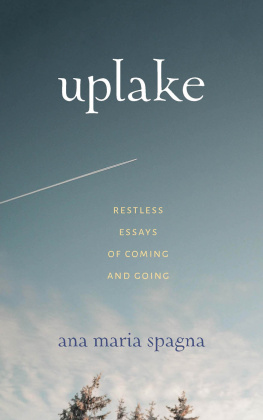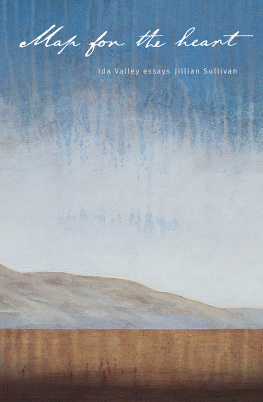RESERVATION RESTLESS
Jim Kristofic

RESERVATION
RESTLESS


2020 by Jim Kristofic
All rights reserved. Published 2020
Printed in the United States of America
Names: Kristofic, Jim, 1982 author.
Title: Reservation restless / Jim Kristofic.
Description: Albuquerque: University of New Mexico Press, 2020.
Identifiers: LCCN 2019030115 (print) | LCCN 2019030116 (e-book) | ISBN 9780826361134 (cloth) | ISBN 9780826361141 (e-book)
Subjects: LCSH: Kristofic, Jim, 1982- | Navajo Indians Biography. | Navajo Indians Social life and customs. | Navajo Indian Reservation Social conditions. | LCGFT: Autobiographies.
Classification: LCC E99.N3 K76 2020 (print) | LCC E99.N3 (e-book) | DDC 979.1004/97260092 [B] dc23
LC record available at https://lccn.loc.gov/2019030115
LC e-book record available at https://lccn.loc.gov/2019030116
Jacket photographs by Jim Kristofic
FOR RICK

He was a man, take him for all in all,
I shall not look upon his like again.
Hamlet / act 1 / scene 2
CONTENTS

ACKNOWLEDGMENTS

Youre reading this book because enough people thought it would be a good idea and supported it. And so I thank them for helping me to think and write about a place and a people who have given so much to the world.
Thanks to Mom, who gave me life in the West and never refused to buy books.
Thanks to Dad, who taught me that nothing happens overnight. And thanks to all my relatives for their incredible support and loyal kindness. May I repay it in full someday.
Thanks to my brother, Darren, for being my best friend and my worst enemy. I love you, bro. Thanks to my younger sister and brother, for being people who Ive always admired. And who I still admire today.
Thanks to Nolan, for being a good model of what a cunning, funny, hardworking man can be. I admire you.
Thanks to all my friends and extended family in Ganado, who gave me a chance and who taught me to live the braver life.
So much thanks to Martha Blue, Ed Chamberlain, Kathy Tabaha, and David Brugge, whose expertise helped me see around corners and whose wisdom helped this book grow toward a greater sense of meaning. Thanks to Ailema Benally, Lyn Carranza, and Tina Lowe at the Hubbell Trading Post National Historic Site, who have inspired and encouraged me during the writing of this book.
My thanks to the staff at Hubbell Trading Post National Historic Site, who welcomed me so graciously and allowed me a peek into the rough-and-tumble Western world of traders and missionaries, a world that people should never forget.
Thanks so much to the staff at Earthship Biotecture for their mentoring spirit and positive attitude as I came to Taos, New Mexico. I greatly admire you all.
A deep thanks to Whitney Nieman and Ken Eske for giving me a beautiful place where I could write the many drafts of this book. I can never repay you.
I salute the excellent and dedicated staff of Taos High School and Taos Municipal Schools. You inspire me to do my best in all things.
A great thanks goes to former Executive Editor Clark Whitehorn and the University of New Mexico Press for taking a chance on this book. I also thank the anonymous reviewers for their input.
And to the people who live in Ganado, Arizona, and Taos, New Mexico: I envy you. You live in the most beautiful, terrible, and wonderful places on earth.
This is a work of memory. I have set down my own impressions and interviewed friends and family to fact-check those impressions. Any errors or mistakes are unintentional. Names have been altered or changed to protect the innocent and the guilty; there are many traditional taboos surrounding the use of names, and youd better believe I respect their power. But memories are subjective. Different people may remember some things differently.
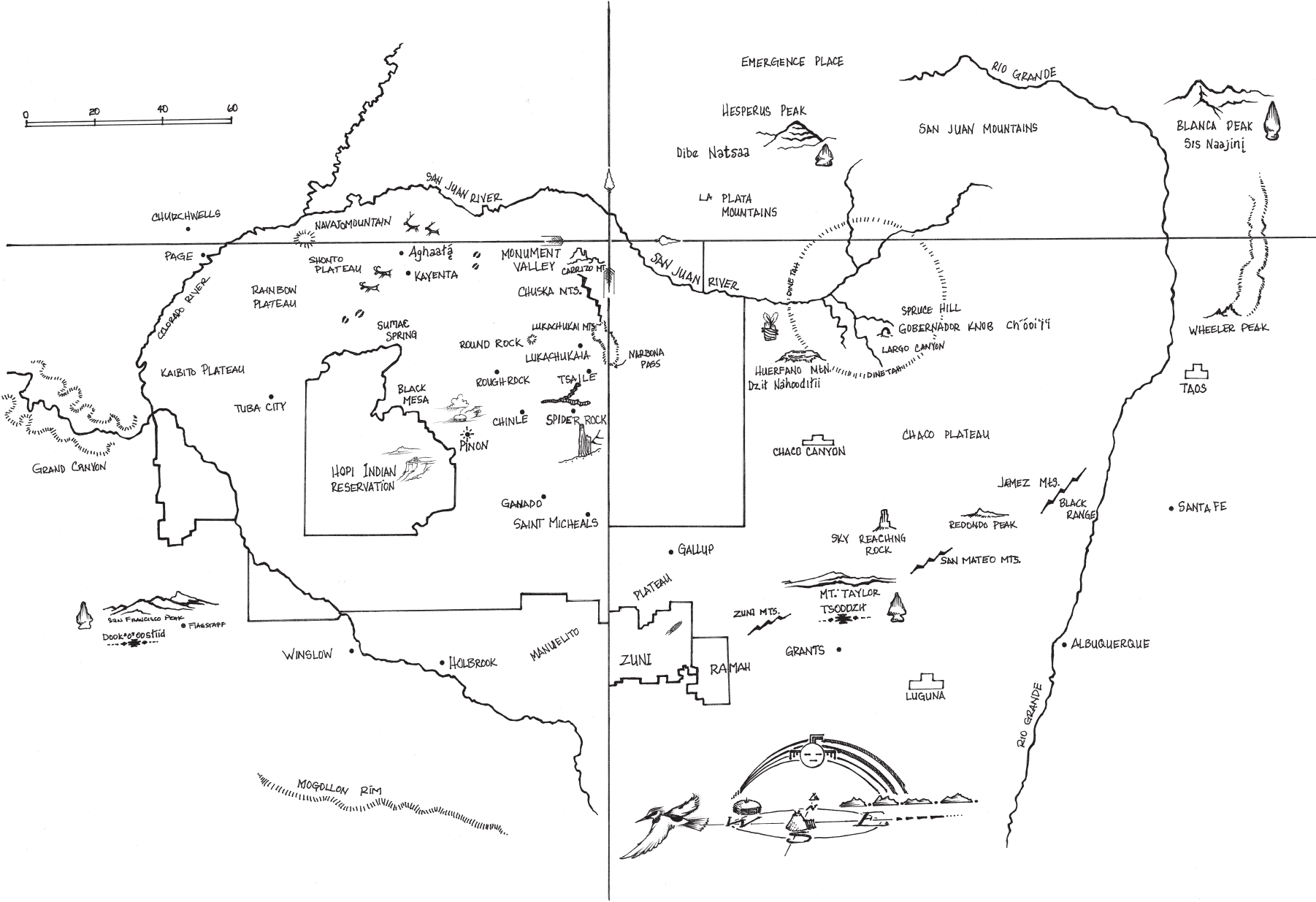
Map of Din Bikeyah, Navajo country.
Illustration by Nolan Karras James.
PROLOGUE / RAINBOW WALK

This all started with my Moms Indian Dream.
She moved my brother and me to Indian Country in the Southwest. We grew up in the small town of Ganado, Arizona, on the Navajo Reservation. There, I was a bilagana (white boy) who had to adapt or die. I chose to adapt, and it became a beautiful life for me in that small valley the Din people who lived there called Lkaahnteel (The Place of the Wide Reeds). I wrote about these years in a book titled Navajos Wear Nikes. While I was there, I gained a Din stepfather named Nolan Manygoats and a sister, Yanabah, and brother, Glen.
When I entered high school, my mom moved us again, to Page, Arizona, where she took a new job with the Navajo Generating Station, the largest coal-burning power plant in the United States, which vented the dreams of a city and the sins of a nation into the sky. In that stark desert country, I would ask new questions I hadnt asked in Navajos Wear Nikes. Or perhaps the place asked those questions through me. I once asked why we decide to call a place our home. Now I would ask why we decide to leave that home, to choose restlessness (or let it choose us), to range into strange experience, and to emerge forever changed.
When I had spare time between feeding our fifteen paint horses, fixing fences, building corrals, shoveling manure, watering our flailing apple and pear orchard, and watching my younger sister and brother, Yanabah and Glen, I got restless. So I gave my body to the desert along the Grand StaircaseEscalante National Monument. I used two plastic soda bottles to do this.
I tied at their necks braided yellow and orange plastic hay twine. This way, I could fill them at the kitchen sink and sling them over my back and let the rope carry their weight over my shoulder.
Then I would pick a direction and walk out.
Some days I took my .22 Marlin range rifle and hunted jackrabbits and ground squirrels. I got good enough to hit them on the run, and I would slit their bodies with my pocketknife and let their blood drain onto the sand on the walk back home. Then I fed them to my dogs.
Some days Id follow tracks for hours. Sometimes it was toward the east, where Naatsiisn, the Head of the World, raised its broad, ten-thousand-foot cap above the edge of a gray mesa. The Americans named it Navajo Mountain. The Din said it was the head of a war god lying on his back, defending the borders of their homeland from invaders. Others from the area say it is the head of a woman, strong as pollen, whose legs are Balakai mesa. I have heard both stories of what Naatsiisn is supposed to be. I like to think it is both, just as each of us is both man and woman in the Din teachings.
I played football with guys whod been raised on the steppes of that mountain. Their ancestors had used the slithered gray canyons around the mountain to hide from the cavalry during the war with the Americans. When most of the tribe had been corralled and arrested at Fort Defiance and pressed into the Long Walk to Fort Sumner, they stayed behind and survived, always in view of
Next page

